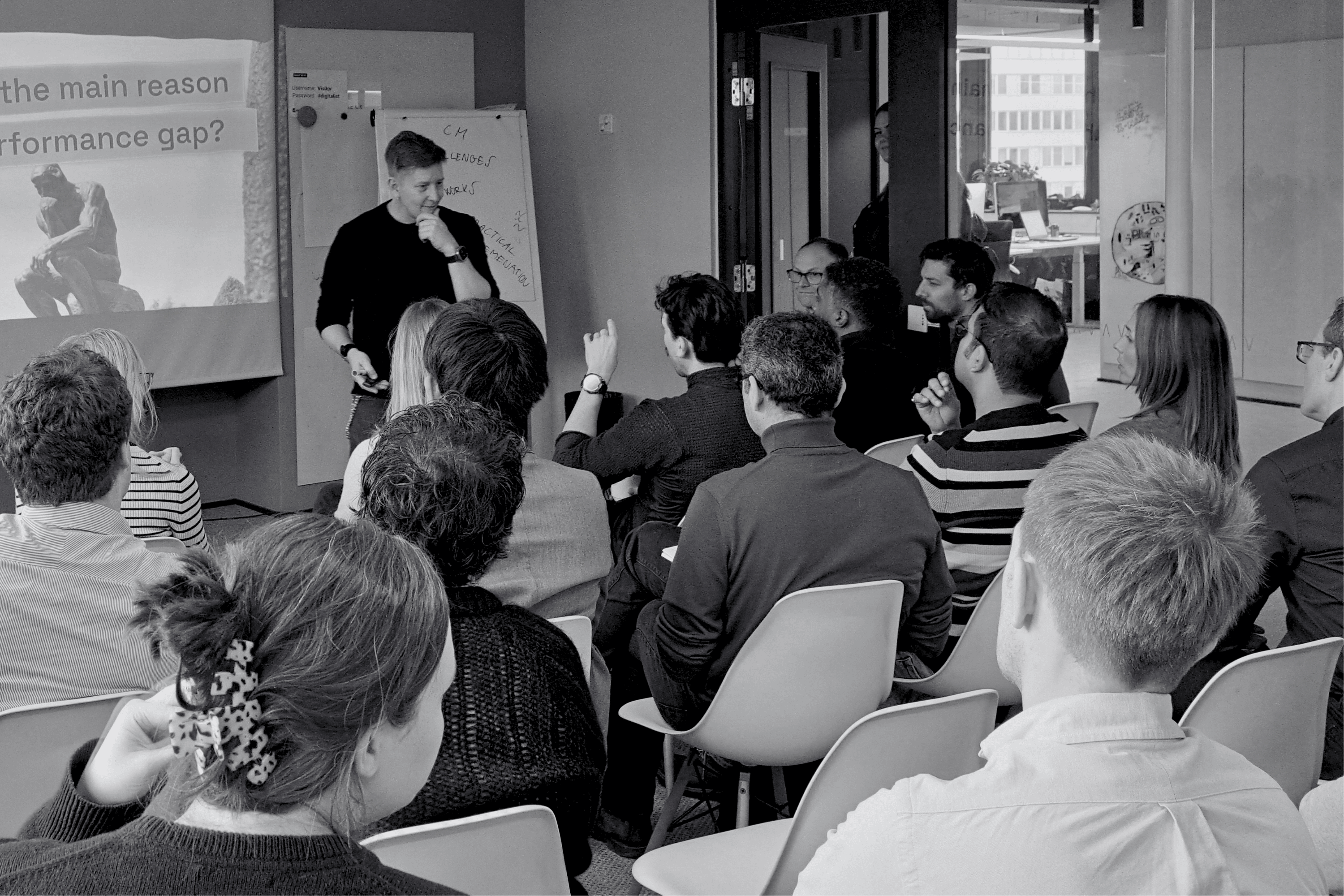
How AI is solving the job-matching puzzle: Case spotlight from Tampere
Employers struggle to fill open positions while job seekers simultaneously face challenges finding suitable employment. This mismatch between workforce skills and job requirements (known commonly as the "skills gap") is one of today’s most pressing issues hindering economic growth and productivity globally.
In Finland we do things a bit different. The innovative initiative by the City of Tampere leveraging artificial intelligence (AI) shows promising early results, highlighting the potential of technology to solve this recurring challenge.
Skill-based matchmaking instead of job titles
The initiative has already gained national media attention, recently being highlighted in a news article with HeadAI, whose AI-driven technology played a key role in analyzing and matching employee skills to employer needs.
We at Digitalist are proud to say we had a big role in the strategy, design, and facilitation of the initiative.
The traditional way of matching people to jobs revolves largely around job titles and conventional qualifications. However, rapid shifts in industries today require businesses to prioritize specific skill sets and competencies over fixed roles or qualifications.
Recognizing this shift, the city of Tampere piloted an initiative using AI-driven platforms that evaluate and match worker capabilities directly to the practical needs of employers rather than simply matching job titles on resumes.
How AI addresses the skills gap in Tampere: Reimagining the talent marketplace
The core of this AI-driven approach is assessing employees’ existing abilities, experiential learning, and transferable skills systematically, then matching these skills intelligently to available jobs in the local market.
This initiative demonstrates multiple strategic benefits, including:
- Rapid, efficient matching: AI processes thousands of anonymous candidate resumes and job openings simultaneously, creating accurate matches in seconds—something human recruiters alone simply can’t achieve at scale.
- Identifying hidden potential: AI algorithms reveal opportunities employees might not traditionally apply for, thereby widening their pool of potential employers and opportunities.
- Pinpointing skill development paths: When relevant jobs exist where employees lack just one or two specific skills, AI can highlight targeted training courses to rapidly close the skill gap and enable successful placements.
Practical example:
During the Tampere pilot programme, multiple matches succeeded because AI surfaced valuable soft skills (such as language proficiency, digital literacy, or proven interpersonal skills) which employees possessed but had previously remained invisible due to narrow, role-based hiring models.
Three key success drivers behind Tampere’s AI job initiative:
1. Clear data visibility and rich skill profiles
Effective AI matching starts with structured, detailed data on job descriptions and candidate skills. To facilitate this, companies and job providers now create more detailed and AI-friendly descriptions of their skill and competence needs. On the other side, candidates build rich, descriptive digital skill profiles to align their abilities with market demands precisely.
2. Robust AI-powered workforce analytics
Using powerful analytics, AI platforms can rapidly evaluate gaps between available workforce skills and employer demands. This data helps companies strategically plan recruitment and training initiatives, significantly shortening the hiring cycle and improving the quality of hires.
3. Cohesive educational partnerships
AI doesn’t just highlight shortages—it offers concrete solutions. Local educational organizations and training providers partner closely, ensuring targeted practical courses align directly with job market demands. This "learn-to-earn" pathway approach rapidly bridges skill gaps, significantly increasing employability.
What this means for the future of recruiting and workforce development?
Though Tampere’s AI-driven model is still relatively young, initial outcomes demonstrate the transformative potential of technology in talent management. By focusing on clearly defined and verifiable skills rather than job titles and conventional credentials alone, employers can gain access to hidden pools of diverse and skilled talent.
At the same time, employees receive personalized guidance and well-targeted training interventions, markedly improving their employment opportunities.
Businesses, regions, and public sector organizations interested in tackling their local skills mismatch now have a concrete blueprint from Tampere’s innovative experience.

Digitalist's role in the AI-powered workforce matching in Tampere
We at Digitalist played a big role by leading strategic service design, user experience (UX) design, and stakeholder collaboration. By partnering closely with local enterprises, educational institutions, employment authorities, and key stakeholders in Tampere, Digitalist shaped the AI-based concept from initial strategy to actionable implementation guidelines.
Strategic research and stakeholder engagement
We started with thorough background research, including expert interviews and market analyses, to clearly identify challenges and user needs in the existing recruitment and training landscape. By engaging early with a diverse range of stakeholders—including manufacturing companies, hospitality sector representatives, education providers, and recruitment specialists—Digitalist gained crucial insights that informed the scope and the strategic direction of the initiative.
User-centric concept design
Leveraging insights from research and interviews we developed detailed user journeys and scenarios for different stakeholder groups such as job seekers, employers, educational institutions, and employment authorities. This user-focused approach ensured the AI-driven solution addressed real-world recruitment pain points and enhanced existing service experiences.
Prototyping and validation of AI tools
We created prototypes and user interface concepts that translated complex AI capabilities into understandable, user-friendly interaction models. By conducting validation sessions and iterative workshops with end-users, Digitalist ensured the solution matched practical user needs. This also simplified adoption by clarifying how the AI system matches skills effectively to job opportunities and training programs.
Clear actionable implementation guidelines
Understanding that AI adoption requires clear communication and structured processes, we produced actionable guidelines on how to effectively integrate and scale the AI-powered matching system within existing services. The project included clear recommendations for data quality assurance, compliance considerations related to privacy, and stakeholder-specific guidance to ensure smooth, compliant, and impactful adoption.
Facilitating ongoing collaboration and ecosystem engagement
We actively fostered dialogue and collaboration among Tampere’s employment ecosystem, encouraging transparency and alignment among regional employers, training providers, and public institutions. By communicating the practical benefits and ensuring usability for diverse stakeholders, Digitalist supported the essential ecosystem collaboration necessary to maximize the impact of this ambitious AI initiative.
In summary, Digitalist brought strategic clarity, user-centric design expertise, and direct facilitation of stakeholder collaboration to the AI employment matching initiative in Tampere, setting a solid foundation for measurable impact and sustainable digital transformation in workforce development.
Takeaways: How your region or business can use AI-driven talent matching
- Rethink talent identification: Focus on clear, skill-based metrics rather than rigid job descriptions.
- Prioritize data visibility and AI-friendly profiles: Encourage both applicants and employers to clearly articulate and document detailed skill and qualification frameworks.
- Build strategic partnerships: Cooperate with educational organizations to rapidly close skill gaps through targeted training.
- Use AI for personalized recommendations: Embed AI-driven analytics to match skills and highlight immediate training pathways that enhance employability.
We know our way around futureproofing organizational change.
Digitalist has a long-standing partnership with the City of Tampere, driving digital innovation and human-centric service design. Interested in learning more? Check out another recent case about how we helped Tampere design future-proof employment and integration services aligned with Finland’s 2025 employment services reform.
Recommended articles

The next million years of design: Crafting a legacy with strategic foresight


Innovation is awesome: Key takeaways from an executive discussion session at the Helsinki Office


